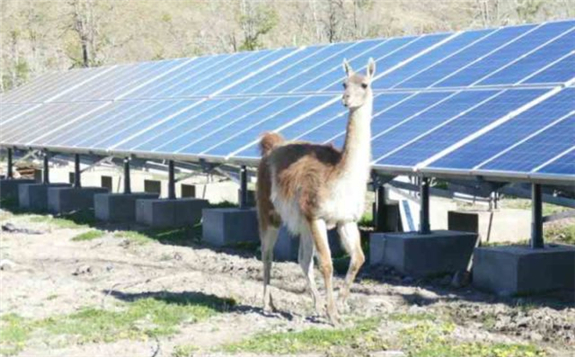A ‘run-of-river’ hydroelectric power station, photovoltaic installation, and battery storage system have been combined to provide facilities in the Patagonia National Park with electricity from renewable energy sources.

The Patagonia National Park is located a great distance from the nearest public utility grid. The power requirements of the park’s facilities have to date been provided by diesel generators – an expensive and environmentally damaging solution.
In winter and spring, the Patagonian rivers are swollen by heavy rainfall and snowmelt from the Andes, providing the opportunity for the run-of-river hydro plant. The two micro-turbines convert the energy from the water into electricity. In summer, the water level in the rivers drops significantly and the required electricity is then supplied by the photovoltaic installation. Excess electricity is temporarily stored in the battery storage systems, supplied by the German manufacturer Tesvolt.
“Combining run-of-river hydroelectric power and a photovoltaic installation is technically very demanding,” explains Gonzalo Rodriguez, an engineer at the Patagonian installation company SyR Energía that planned and executed the project.
“The park is so remote that it was extremely important to install components of high quality that therefore require minimum maintenance. We, therefore, decided to install storage systems from Tesvolt who lead the field in terms of quality. This has paid off. The installation has now been running without no problems at all for exactly one year,” explains Rodriguez.
According to Rodriguez, the hybrid solution will achieve a total output of 115 kilowatts peak (kWp). Two hydraulic turbines were combined with a solar system, both with AC coupling. The lithium-ion battery storage units have a capacity of 144 kilowatt hours (kWh).
The Patagonia park encompasses over 300,000 hectares of grassland plateaus, forests, wetlands and alpine regions. It owes its existence to the Tompkins Foundation, the brainchild of Douglas and Kristine Tompkins. The foundation is committed to restoring the original grassland and establishing native plant and animal species.
“We are very excited about the construction of the most advanced hydroelectric-solar microgrid in Chile which will continue to provide clean power for the park for many years to come. This alternative energy system minimises the park’s CO2 footprint and therefore contributes to the fight against climate change,” says Carolina Morgado, executive director of Tompkins Conservation Chile.